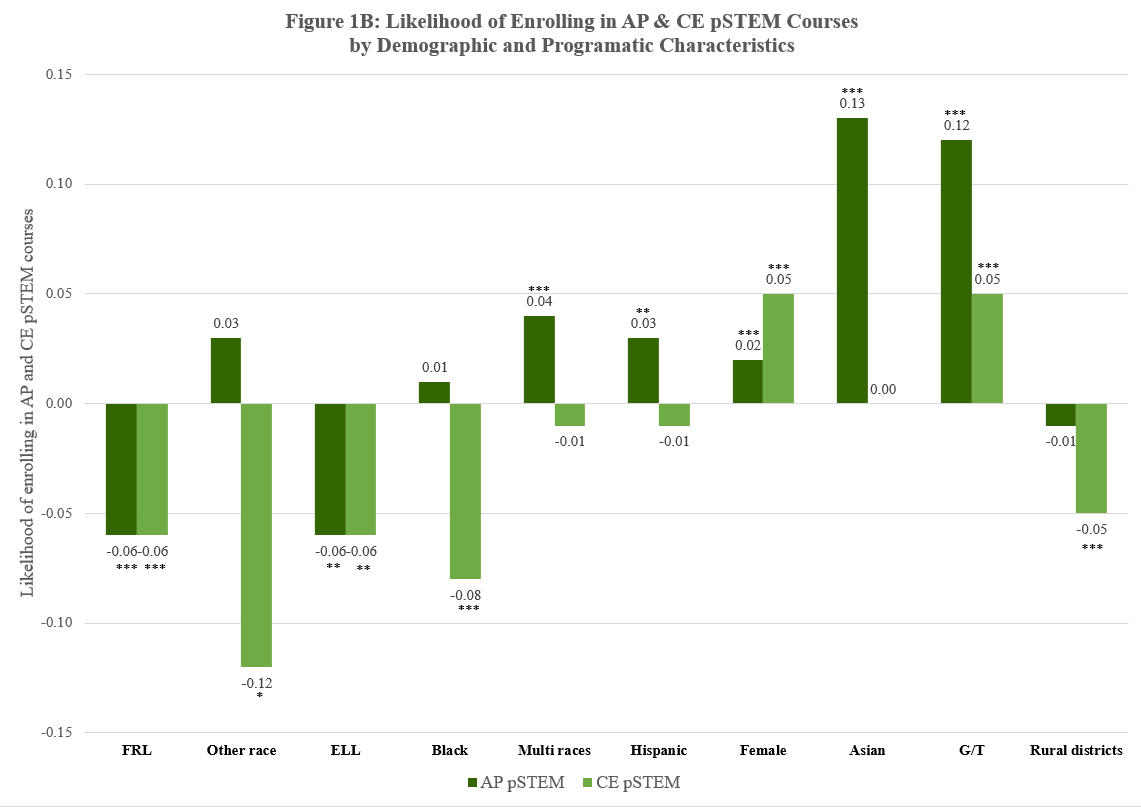Today’s blog was written by OEP Graduate Researcher Rian R. Djita, about his research with EDRE’s Andy Parra-Martinez, Jonathan Wai, and Sarah McKenzie.
Whether we agree or not, the US education system still emphasizes the importance of going to college if one wants to succeed. Therefore, there are a lot of policies across the US that aim to increase college enrollment for students, especially those who come from minoritized backgrounds, including universal access to rigorous courses like Advanced Placement (AP) and Concurrent Enrollment (CE) courses. Arkansas has been among the few states in the country that required all school districts to provide access to advanced coursework for the past two decades.
Today, the OEP released findings about enrollment in AP & CE courses on students’ college enrollment. We recommend you read the full report, or the shorter policy brief, but here highlight some of the findings here.
Enrollment in AP & CE courses was still related to students’ demographic and programmatic characteristics.
With its universal policy on AP & CE courses, one would expect that all students, regardless of their backgrounds, would enroll in these courses that may prepare them for college and reduce cost of getting a degree. However, that is not necessarily true. For instance, after controlling for demographic characteristics and prior achievement, Free and Reduced-Price Lunch (FRL) and English Language Learner (ELL) students consistently have a lower likelihood to enroll in AP and CE courses compared to high-income and non-ELL students. We found that this universal policy increased the likelihood of enrollment for certain groups of students such as, female, Asian, and G/T students. Black, Hispanic and multiracial students than White students, but the trend is the opposite for CE courses. Figures 1A & 1B show the likelihood for each group of students enrolling in AP & CE courses (Fig. 1A) as well as AP pSTEM & CE pSTEM (Fig. 1B). All estimates are in percentage points (pp) and are interpreted against the base category (e.g., Hispanic vs. White, FRL students vs. Non-FRL students, etc.).


***p<0.001, **p<0.01, *p<0.1
Note: pSTEM is any course under physical and life sciences, technology, engineering and mathematics disciplines and excluding social science disciplines due to missing data.
Enrollment in AP & CE courses in high school is associated with a higher likelihood of enrolling in college.
Compared to students who did not enroll in any AP or CE courses at all, we found that enrolling in at least one AP course in high school is associated with a higher likelihood of enrolling in a 4-year institution by 21 percentage points (pp), in-state institution by 17 pp, out-of-state institution by 4 pp, top schools (most competitive, highly competitive and competitive schools according to Barron Index) across the country by about 11 pp. Moreover, enrolling in at least one CE course is only associated with a higher likelihood of enrolling in a 4-year institution by 22 pp and an in-state institution by 21 pp.
However, we still observe students’ level of household income (proxied by FRL) and ELL categorizations lower this likelihood of college enrollment.
Based on these findings, we suggest:
- A deeper dive into why this universal policy works for some students but not for others. The lower AP & CE enrollment among ELLs and students participating in the FRL program might be influenced by other contextual factors, such as the type of AP and CE offered, teacher preparation, and level of guidance and support that is worth exploring by future studies.
- College is not for all, after all. Instead of pushing all students to take rigorous courses and enroll in college, let’s shift our focus to other alternatives where the students are more interested in or thrive, such as Career and Technical Education (CTE) courses. By doing this, we avoid trapping students who are unprepared for college to emotionally and academically struggling in these courses, which might also delay their graduation and workforce participation.
- Arkansas’s universal policy leveled the playing field regarding access to these educational opportunities, but disparities persist across minoritized and underserved student demographics. These disparities are nuanced; therefore, evidence suggests the need for equally nuanced policy implementation targeting the most disadvantaged populations.
